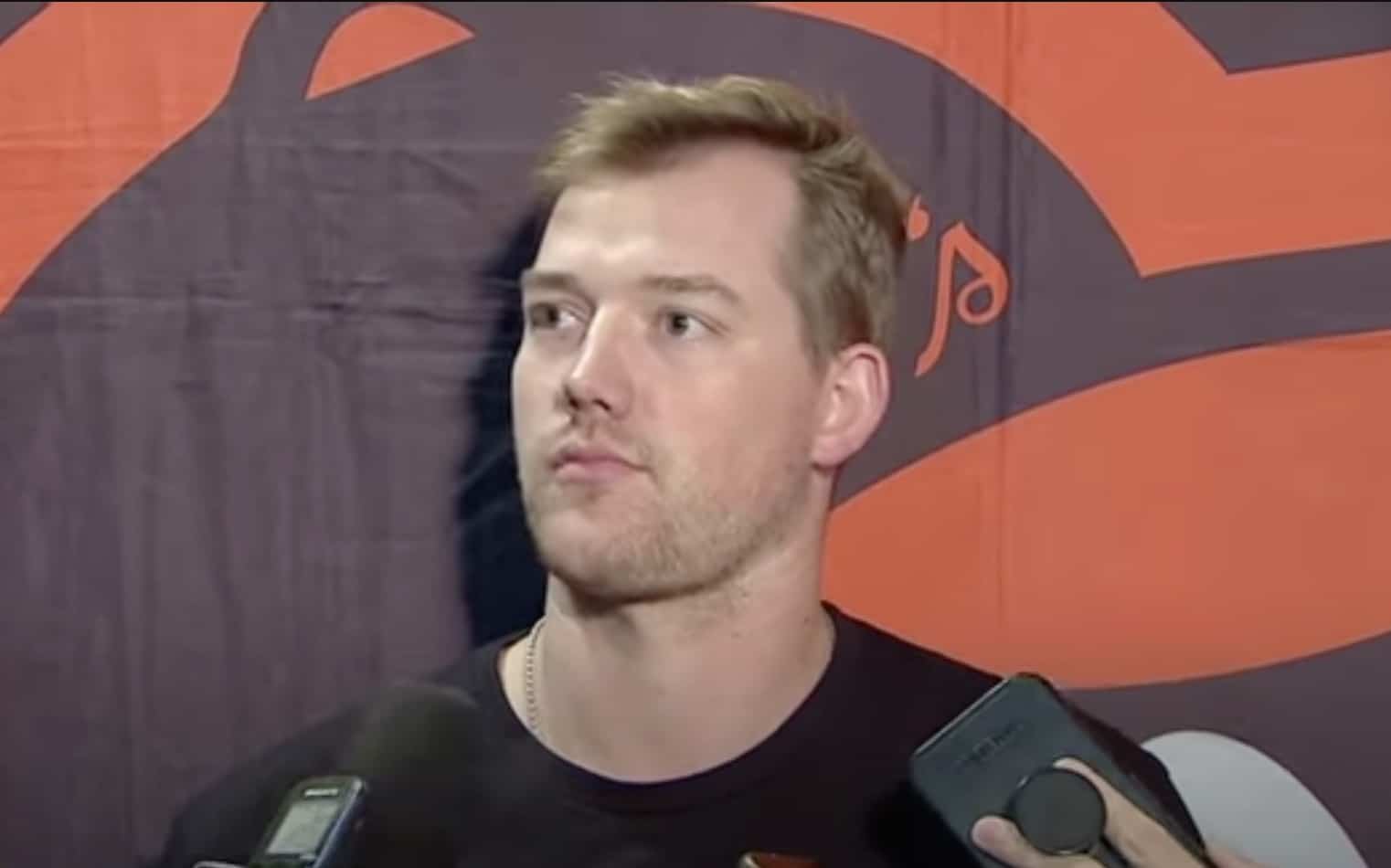But the stories were all verified and true. The latest evidence began to mount on January 2, 1996 when Home Team Sports notified long-time broadcaster and former Orioles outfield John Lowenstein he would not be returning for his 12th year in the broadcast booth after a stellar career as a member of the 1979 and 1983 World Series teams. “Brother Lo,” as he was affectionately referred known by the fans and teammates, was left stunned and searching for answers.
“I have run the full gamut of emotions here from kind of stunned and shocked silence to bitterness and anger,” Lowenstein told The Baltimore Sun. “And I’ll tell you what: This move leaves me very distraught. This is very, very difficult to stomach, especially when you know you’re doing a good job. I was devoted to this job.”
Eschewing any routine professional courtesy, the move was made so late in the season – most baseball teams tell their broadcasters in October whether they’ll be returning the following season – that the irreverent Lowenstein wouldn’t have a chance to get another job in MLB. “I just wish I had been told about this early,” he told the newspaper. “Even if you’re told about it early, you can carry the ball for yourself, and maybe you can do some things for yourself.”
Former Orioles star pitcher Mike Flanagan had ingratiated himself with the Angelos family and once his legendary status as a player had come to an end, he was offered the job of color commentator for 1996 by Angelos. “I don’t know what more I could have done,” said Lowenstein, who would often offer honest and sometimes critical commentary about the games as they were unfolding.
“You have to be credible to your audience, don’t you?” he rhetorically asked the newspaper reporter. “And if that requires being a little critical, so be it. But there’s no way I was overly critical. I strongly supported this club in its mission to build a championship team. That’s why I admired [owner] Peter’s [Angelos] efforts. For this to come down like this was inexplicable.”
Nowhere in the story by The Sun does it mention the words “Peter Angelos.” The firing was attributed to Home Team Sports but it was very clear to everyone around the team what had happened with Lowenstein. But it was the first of many signs of changing times for Orioles broadcasts and broadcasters and the way the fans would be presented the “new era” of Orioles baseball on television, radio and in the media aftermath by the Angelos regime.
The 1996 Orioles made their new spring training home in Fort Lauderdale. The previous years had been a disjointed mess left over from the Eli Jacobs era. The Birds trained in Miami for 31 years and left in 1990 only to find Sarasota and St. Petersburg untenable. Many teams were getting bigger and better deals from sleepy Florida and Arizona retirement communities for publicly funded stadiums that could be used for minor-league facilities in great weather year-around. Angelos believed that the Orioles would be next in line to take advantage of a sweetheart deal in the sun for a spring home.
This dumpy facility in Fort Lauderdale that the Orioles claimed only became vacant after 1995 when the New York Yankees left it in a dilapidated state and it clearly hadn’t been renovated in more than 20 years. The Yankees vacated the stadium to move to a state-of-the-art facility in Tampa, which was owner George Steinbrenner’s adopted hometown. (He was originally from Cleveland).
And even if the Fort Lauderdale locker room was stocked with star players pulling up in $100,000 automobiles and the room boasted the highest payroll in the sport, no one on the 1996 Baltimore Orioles would be spoiled by the excess or lavish facilities during these six weeks of camp hell in the Florida sunshine.
The main stadium was located off I-95 in an industrial park that featured a commuter airport full of commercial jets whisking wealthy executives into what looked – and sounded – like deep left field. Planes were constantly motoring along and landing and taking off over centerfield. No one could feel good about this dump but Angelos and his very involved sons, John and Louis, chose Fort Lauderdale over the opportunity to share a Disney-sponsored facility that was being planned and built to spec near Orlando in the middle of the state. The Atlanta Braves had quickly taken the deal and would’ve been the Orioles partner in the project but Angelos didn’t like the idea of sharing the facility and he thought he should be making more money than the 1994 Disney deal afforded. Besides, Angelos and the boys also liked the fact that a private plane from BWI would allow them to literally land adjacent to the field to the watch Orioles games in March. It was door-to-door service plus Fort Lauderdale afforded a spicy nightlife, quick transfers to South Beach, a world-class horse racing track at Gulfstream Park and access to everything on the I-95 corridor and beach coast.
It was perfect for everything – except building a baseball team.
There were a myriad of “baseball” problems with the mere concept of hosting spring training in Fort Lauderdale. First, most teams had left the busy east coast of Florida over the years for the other side of the state. Plus, every road trip included a two-to-three hour bus ride to play games, even B games to get more innings for younger farm players. The stadium, built in 1962 by the Broward County government, had no gym, no area for lifting weights, no real amenities at all. Players who were making $6 million per year were expected to lift weights in a tent in the parking lot and eat lunch at their locker in a slummy, rundown clubhouse for six weeks. But the biggest issue was the lack of space for a minor-league facility to house all of the players and coaches in the organization in one complex. The Orioles maintained another dumpy facility for minor league players in Sarasota at Twin Lakes Park, which didn’t have a stadium to play games but had rudimentary baseball facilities and fields. The two sites were 203 miles apart.
For coaches, scouts and players who were on the bubble, it was a nightmare driving back and forth across what is known to locals as “Alligator Alley” in a rental car. It was literally the worst spring training situation in Major League Baseball and there wasn’t a close second place.
And Peter Angelos and his sons chose Fort Lauderdale over a brand-new, Disney-built park and complex with 10 other teams playing within a two-hour bus ride for better road game travel in Florida. Spring training is pretty rough on most franchises. It looks like a lot of golf and fishing for some but for talent evaluators, coaches and a player who isn’t a star and is desperately trying to be one, it’s just not conducive to winning. The split situation made everything harder for every person who wore a uniform in the franchise.
New manager Davey Johnson, a veteran of all of the wars, got the team ready to head north with a wave of new confidence and a team chock full of superstars. The Orioles won the first four games of the season and jumped out to an 11-3 start but quickly began to sputter. The team fell out of first place on April 27 and limped through the spring and into June, heading toward the All Star break barely teetering on relevance in the race. By July 28, the team was actually a game under .500 at 51-52 and looking like a bloated roster of All Stars who didn’t mesh. Gillick had traded for aging Orioles legend Eddie Murray on July 21, which delighted the fan base and Angelos, but not as much as winning some games would’ve helped in the heat of the summer.
The biggest single day on a general manager’s calendar is July 31 – the annual trading deadline. It’s the final chance to obtain playoff-eligible players without being encumbered by the waiver wave. It’s a day to evaluate your franchise’s intentions and decide whether you’re going to be a buyer or a seller for that year. Of course with Gillick, the question was “Stand Pat” or “Trader Pat”?
For the seasoned Gillick, whose 32 years of MLB experience taught him to look to the future, it was clear that the 1996 Baltimore Orioles were not a legitimate factor to be a playoff team and certainly not a World Series threat. Despite commissioner Bud Selig forcing an extra wild card team and a new division into Major League Baseball in 1995, vastly increasing every team’s chances of earning a postseason berth, Gillick felt that it was time to sell or trade off some expensive players for cheaper, younger, future talent. If it’s all a big gamble in dealing baseball players, this was a time to fold at the poker table.































